




Protein is a Superdiet
You might have heard the word protein so many times, but do you really know what the word really means? Let’s find out! In this article we will briefly discuss protein, what it is and what is its importance in our diet and also state some facts about it.
Proteins are complex molecules which play an important role in body building. They are abundantly present in things like eggs, pulses, cheese, fish, etc. Protein contains elements like hydrogen, carbon, oxygen, nitrogen, sulphur etc. which are very beneficial for our body.
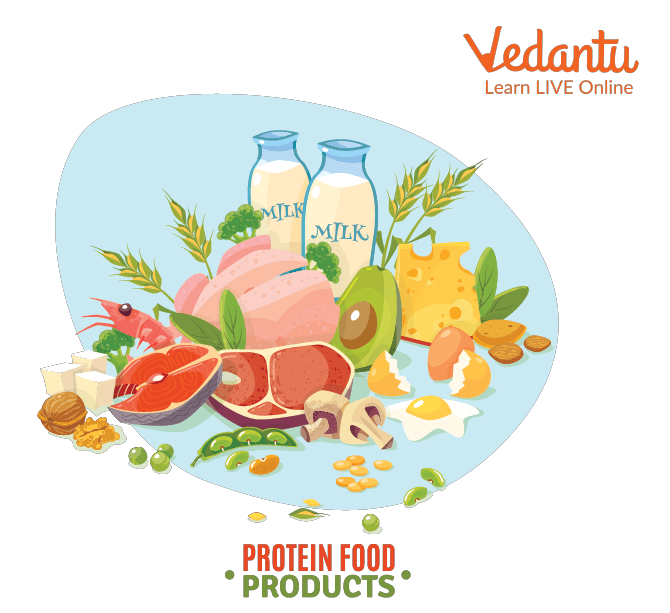
Protein
General Structure and Properties of Proteins are Discussed Below
The common property of all proteins is that they consist of long chains of α-amino acid.
The primary structure of a protein and its amino acid sequence drives the folding and intramolecular bonding of the linear amino acid chain, which ultimately determines the protein's unique three-dimensional shape.
The secondary structure of protein refers to local folded structures that form within a polypeptide due to interactions between atoms of the backbone.
The tertiary structure of protein arises from further folding of the secondary structure of the protein.
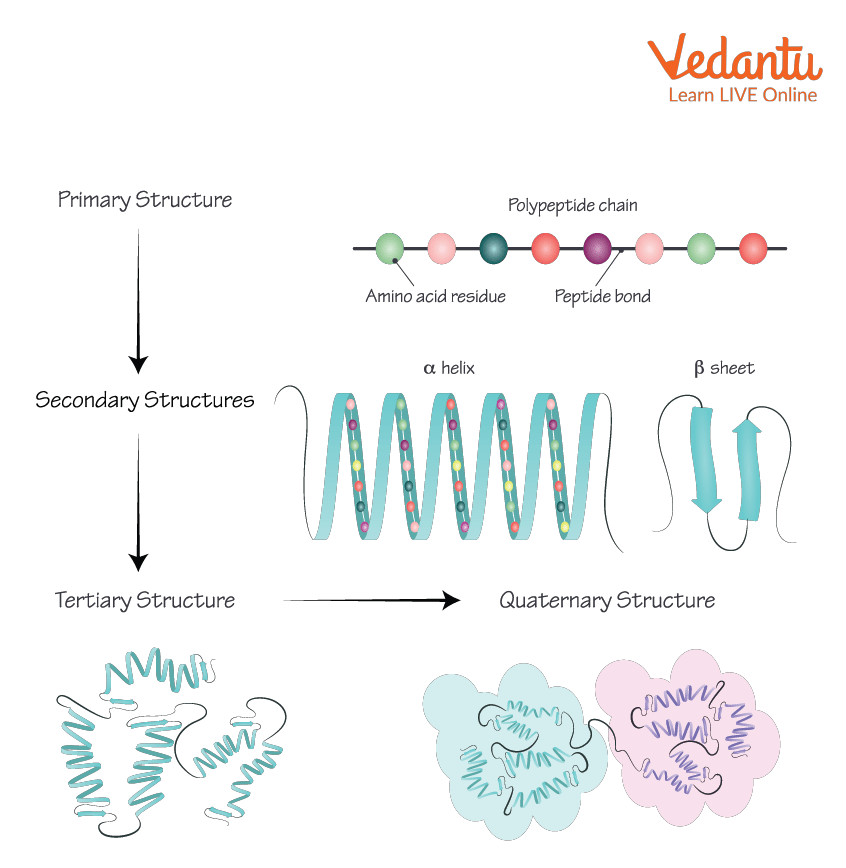
Protein Structure
Protein Facts
The word protein is derived from the Greek word “Proteios” which means “Primary”.
Proteins are classified into four categories primary, secondary, tertiary, quaternary based upon their structural variations.
Proteins help in normal body growth.
Enzymes are the quaternary proteins.
After water, they are present in abundant quantities in the human body.
Eggs contain the highest quality of proteins.
Albumin is a protein in blood which maintains fluid balances in the body.
Some proteins are called complete proteins because they contain all the required amino acids. This category includes eggs, dairy products, soya, etc.
Men require more protein as compared to women.
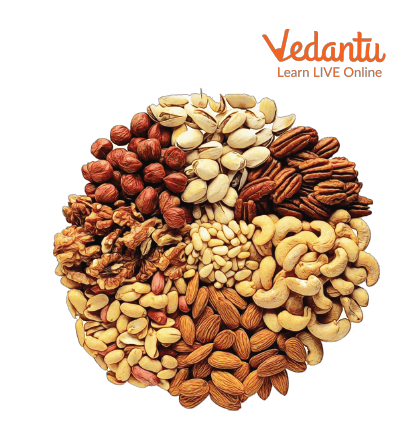
Nuts and Beans Contain Proteins
Protein for Kids
Protein is the second most abundant compound in the human body, so it is required in large amounts in the human body. Therefore, sufficient amounts of protein must be there in the diet to meet the requirement for normal growth and development of the body.
The requirement of the proteins varies with age and as one’s age increases, the requirement of protein also increases, especially during adolescence. The age-wise daily protein requirement is shown below.
1-3 years: 14g
4-8 years: 20g
9-13 years (boys): 40g
9-13 years (girls): 35g

Protein for kids
Protein as a Superfood
Protein contains a lot of essential amino acids which helps in increasing muscle mass. So, athletics all over the world are trying to shift towards a protein based diet. These days, more and more people are consuming protein supplements for increasing muscle mass. Studies show that weight-trainers who do not eat extra protein (either in food or protein powders) still gain muscle at the same rate as weight-trainers who supplement their diet with artificial protein sources.
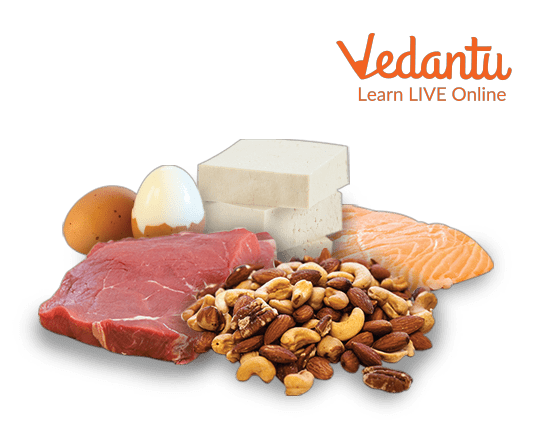
Protein as a Superfood
Biological Importance of Proteins
Our body shows a considerable variation in the amount of protein contained in various parts; generally organs contain more protein than plasma. The most important proteins, such as enzymes and hormones, occur in extremely small amounts. All enzymes identified thus far are proteins. Higher organisms such as vertebrates require a carrier molecule for the transport of oxygen so in all vertebrates haemoglobin serves this purpose which is also a protein.
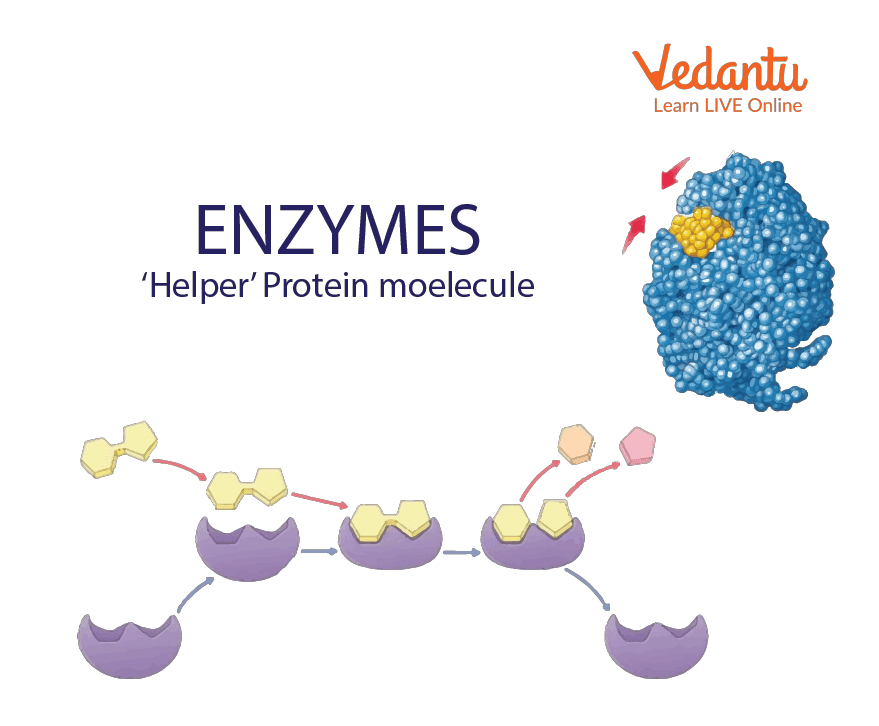
Enzymes
Solved Questions
1. How many types of amino acids are there in a protein?
Ans: Amino acids are mainly categorised as essential and non-essential amino acids. So in proteins, we can find either essential or non-essential amino acids or even both kinds of amino acids.
2. What makes secondary protein different from the primary protein?
Ans: Secondary proteins are more complex as compared to primary proteins because the structure of secondary proteins have interlink between the polypeptide chain.
3. What are the major biological functions of protein?
Ans: Proteins can perform many functions; they can form the structure of most of the cells. They regulate the osmotic balance in the body as well as most of the catalyst and enzymes or protein.
Summary
A protein molecule is very large compared to molecules of sugar or salt. There are about 20 different amino acids that occur naturally in proteins. Proteins are generally obtained from plants or animals. Plants can synthesise all proteins but animals cannot. So there are some proteins which are essential to be taken from outside.
FAQs on Must-know and Interesting Facts about Proteins
1. What is the difference between protein and carbohydrates?
Carbohydrates are polymers of monosaccharides while proteins are the polymers of amino acids.
2. What is the best source of protein?
The best sources of protein are meat, chicken, egg, milk and certain types of pulses.
3. What is the difference between essential and non essential amino acids ?
Essential amino acids are those which are required from outside and non essential are those which are not required from outside because they are produced inside the body.
4. Women need more protein than men. True or false?
False.
This is so because the muscle mass and the weight of the men is generally more as compared to females so due to which women require more protein than men.









